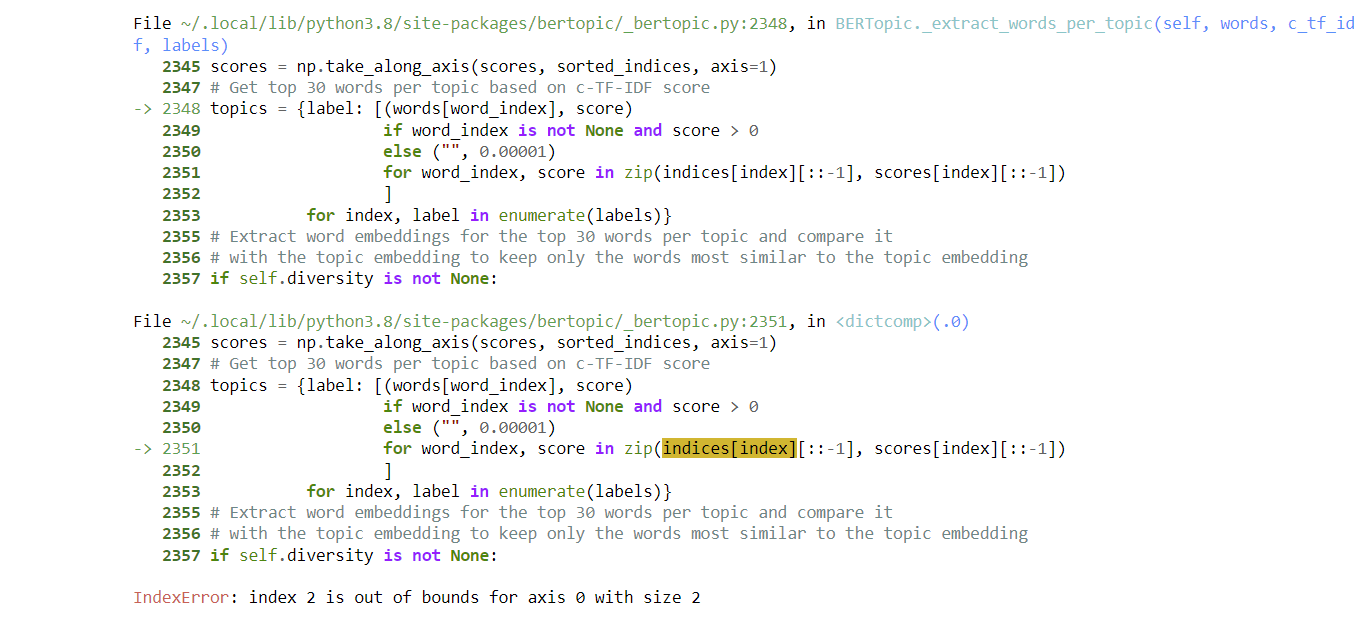import numpy as np probability_threshold = 0.01 new_topics = [np.argmax(prob) if max(prob) >= probability_threshold else -1 for prob in probs]
This code indeed does not change the internal structure of BERTopic. You can see that the topic model was not referenced here. In order to update your model with the new topics, you will have to perform the following:
import pandas as pd
import numpy as np
# Extract new topics
probability_threshold = 0.01
new_topics = [np.argmax(prob) if max(prob) >= probability_threshold else -1 for prob in probs]
# Update the internal topic representation of the topics
# NOTE: You can skip this step if you do not want to change the topic representations
topic_model.update_topics(docs, new_topics)
# Update topic frequencies
documents = pd.DataFrame({"Document": docs, "Topic": new_topics})
topic_model._update_topic_size(documents)._update_topic_size() has been separated from .update_topics() on purpose as updating topics was initially meant to update the topic representation only and not the corresponding frequencies. Doing so might make it less transparent as to what the model initially produced as output.

Hi Maarten,
Thanks again for your AMAZING work !!!
I have a question regarding this bit of code : import numpy as np probability_threshold = 0.01 new_topics = [np.argmax(prob) if max(prob) >= probability_threshold else -1 for prob in probs]
I know that I can use this new_topics variable in topics_over_time instead of topics ...
But topic_model.get_topic_info() is still giving the list of topics with the old topics ... how can you update or use this new feature , i'm a bit confused ...
Thank you again !
Regards